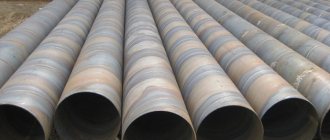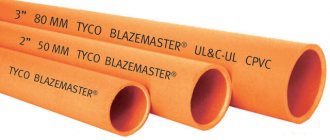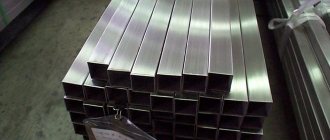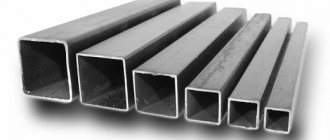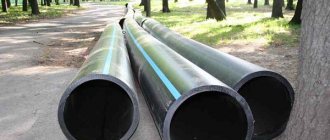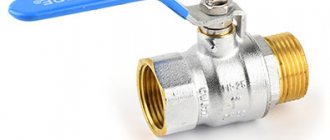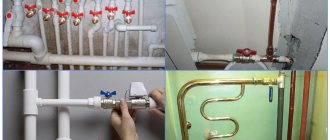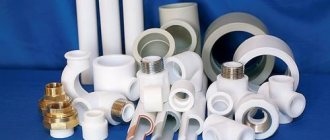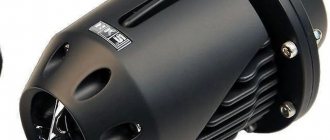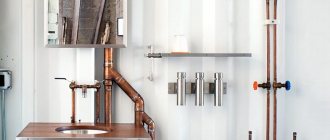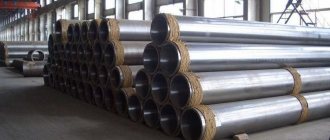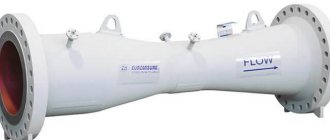Reliable threaded pipe connection with your own hands.
The pipeline is an integral part in the modern world, since it is through the pipes that cold and hot water enters our homes, as well as heat and gas supplies. Without pipes, it is impossible to imagine how the heating system in an individual residential building will work. In addition, pipes should be connected to each other, and plastic products are most often welded together, and copper ones are soldered; for metal-plastic pipes there are compression or press fittings. For steel pipes, the most common is a threaded pipe connection, but sealing them is not an easy task.
Types of pipe threaded connections
Hydraulic fittings are detachable fittings made from brass, carbon stainless steel or alloy steel. Their surface is treated with anodized or zinc galvanic coating, which prevents the development of corrosion processes. A wide range of products allows you to create hydraulic systems of any complexity, including those laid through bulkheads and walls.
Products can have metric or inch threads. Depending on the shape, the following types of pipe connections are distinguished:
- Straight - used to connect two pipes with the same diameter.
- Angular 45°, 90° – are responsible for the deviation of the direction of the sleeve at a certain degree.
- T-shaped - provide branches from the main pipe in lateral directions.
- Cross - allow you to make a branch in two perpendicular directions.
- End - mounted at the ends of pipelines. They can be used for connection to lubrication or hydraulic equipment (hydraulic units, pumps, etc.).
The internal design of fasteners can vary significantly. Often in installation, connections with a cutting ring (cone angle 24°) are used, which, when tightening the nut, deforms the pipes. Insertion using this method is performed inside the product (under the ring) and at the end of the pipe. In the first case, the insert ensures the tightness of the system, in the second it helps to keep the ring at the required distance from the end of the pipe.
JIC 37° pipe threaded connections, according to ISO 8434-2/SAE J514, are traditionally used for high pressure hydraulic systems. The seal is achieved by contact between two metal surfaces, without deformation of the individual components. The connection between the fitting body and the flared pipe (74° cone angle) is ensured by a tightening nut and a sealing sleeve inside. This allows for a connection that can be quickly assembled and disassembled, making the assembly of complex hydraulic systems as simple as possible.
The JIC 37° fitting provides excellent system sealing regardless of the fluid used, as long as no corrosive fluids are used and all fitting specifications are followed. These fittings are manufactured in one single series, defined as “UNIVERSAL” because the body and nut of the fitting remain the same even when changing from an inch pipe to a metric pipe, and there are no dual diameters with different operating pressures. According to the standards, vibrations do not change the operating parameters of the fittings even at maximum values. Under the mechanical force created by tightening the nut on the fitting body, the 37° flared portion connects with the 37° tapered portion of the fitting body, creating a metal-to-metal seal. A sealing sleeve placed on the inside of the nut ensures the system is properly centered, reducing vibrations and preventing any possible damage to the pipe during the assembly phase.
Repair and installation clip
A universal product that can be used to repair pipe metal products without welding, as well as polyethylene pipes, is a repair and installation clip.
It consists of two cast cages in the form of semi-bushings, having four ears for bolt fastening. The kit includes a rubber seal in the form of a hose cut to length and four bolts.
In essence, it is a clamp that plumbers often use, but it is made very well. Available for pipes of different diameters, making it possible to repair them without welding or threading.
The product is used for repairing damaged pipelines for various purposes. If a through hole appears in the pipe, a split seal is placed on the damaged area, oriented with the cut in the direction opposite to the damage.
Clips are installed on top of the seal and the bolts are tightened. These repairs do not require welding and can sometimes be done under pressure without shutting down the pipeline.
Application area
The use of pipe threaded connections is relevant in many areas of industry. The products can be used to connect large and small threads, change the direction of a pipeline, bundle hoses with cylinders, valves and other components of the hydraulic system. They are often used for hose or pipe separation, combining flows into a single line, shutting off pipes and hoses.
The purpose of fasteners varies depending on their size and pressure. According to DIN 2353, the following connection series are distinguished:
- LL (very light) - suitable for installation in small refrigeration or hydraulic systems, for propane, compressed air, etc.
- L (light) – are versatile and can be used in standard systems within their operating pressure ranges.
- S (heavy) – designed for high-pressure hydraulic systems (in shipbuilding, chemical and mining industries, in the production of heavy equipment).
The series of connectors is determined by the metric thread size and the outer diameter of the pipes. In particular, very light fasteners have a metric thread from 8x1 to 12x1 mm and are used for pipes with a diameter of 4–8 mm.
Running threads
In some cases, the purpose of the surface in question is not to fasten parts, but to ensure smooth movement within a certain range. The features of such products include the following points:
- The profile has a shape that ensures a smooth ride. To do this, a surface with the fewest corners is created.
- As a rule, the working part is long; there are travel stops at the beginning and end.
- The material used to create the workpiece must have high wear resistance.
Such products are extremely rare today, since their reliability and service life are relatively low.
Advantages
Thanks to their well-thought-out design, pipe threaded connections ensure reliable and safe installation of hydraulic systems. Their popularity is due to many advantages:
- possibility of installation in hard-to-reach places;
- short installation time of the hydraulic system (60–70% faster than when using welded fasteners);
- creating optimal conditions for laying pipelines for a wide range of working environments, including high-pressure pipes;
- simplicity in laying hydraulic pipes - there is no need to use special equipment and attract highly qualified welders (the work is performed by mechanical assembly mechanics);
- absence of scale on the pipes after assembly.
Steel products are affordable and allow for cost-effective installation of pipes according to the planned budget. Thanks to a wide range of sizes and configurations, consumers can select a pipe connection that fully meets their pipe installation needs.
What to do when a leak is discovered?
After shutting off the water supply, they try to minimize the damage that the fistula can cause to the owners and their neighbors. For this purpose, place a large piece of rags under the leak. However, the best option would be a container (basin or bucket), since water will continue to flow for some time after the valve is closed.
After the “leak stops flowing,” the breakdown is either repaired independently, or a plumber is called in when there are too many “fountains.” If the decision is made to deal with the problem without the help of a specialist, then the first thing to do is wait for the “accident” site to dry out. At this time, the technician must find the cause of the defect.
This sequence of actions applies to plumbing. If a leak is detected in the centralized heating system, then specialists are called immediately. To avoid a hot flood, place a container under the leak. When this is not possible, because space does not allow, a thick blanket is spread on the floor under the hole.
How to choose a pipe connection
The main reason for pipeline failure is the incorrect selection of connectors. Therefore, during installation, elements should be selected according to the purpose of their use, taking into account many different criteria:
- compatibility with the work environment;
- type of hydraulic pipeline;
- pressure loads;
- working environment consumption;
- thermal load;
- operating conditions of the hydraulic system;
- corrosive effects.
A particularly important criterion is the resistance of fasteners to corrosion processes. For example, the pipelines of some metal processing machines are regularly exposed to grinding dust and cutting fluids, and installations in the medical and food industries can suffer from aggressive environments. In such a situation, connectors made of plain steel, including those with galvanic coating, cannot be used. Stainless steel products will be more effective as they can reliably protect the hydraulic system from corrosion.
To select the correct pipe threaded connections, the latest standards and regulations must be taken into account. When purchasing, it is important to take into account the technical requirements for a specific pipeline, as well as use the experience of using the selected product accumulated by the manufacturer.
Features of round thread
This type of cutting can be found on sanitary fittings (regulated by state standard number 13536-68) and on lighting fixtures, as well as on sockets and sockets for them. This variety makes it possible to obtain compounds that are periodically subject to disassembly. The profile for round threaded connections is obtained by mating two arcs with the same radius. The thread pitch is always measured in millimeters, and the letters “Kr” are used as a designation.
Parts used for domestic purposes are equipped with regular round threads
The design features of round knurling provide it with a long service life and significant resistance to loads. The profile does not wear off even with frequent use. Also, such threads can be quite successfully used in systems operating in polluted environments. The round type of threaded connections is used, for example, when coupling railway cars.
General information
All connection methods are divided into two types. This is a threadless connection, which includes all types of welding, cold welding of pipes and flange connections. But the most common connection method is considered to be threaded. We most often deal with it in everyday life and households. These connections are also made by direct connection, using tees, adapters, couplings, taps and other special devices.
A special option for connections is a union nut. It provides a threaded connection on one side and a threadless connection on the other. More precisely, it takes into account both types of pipe connections
